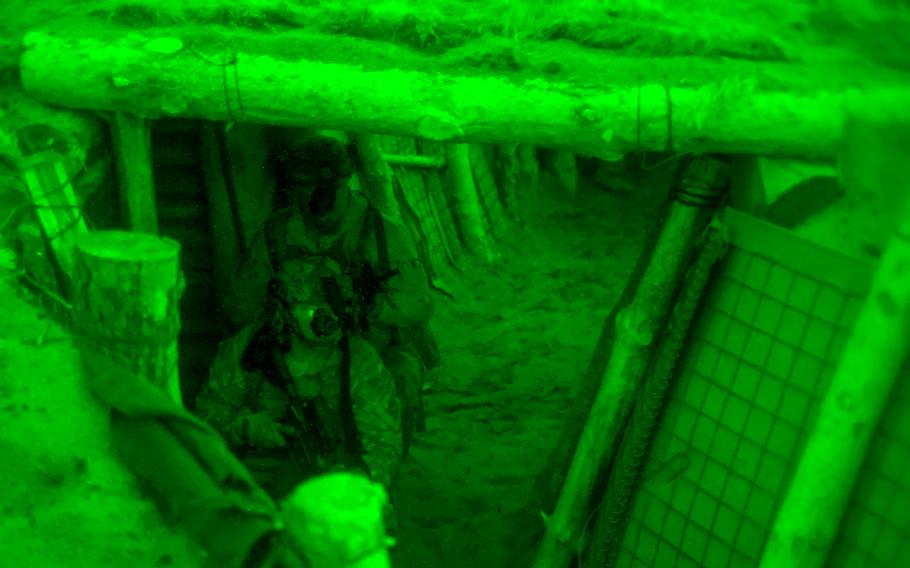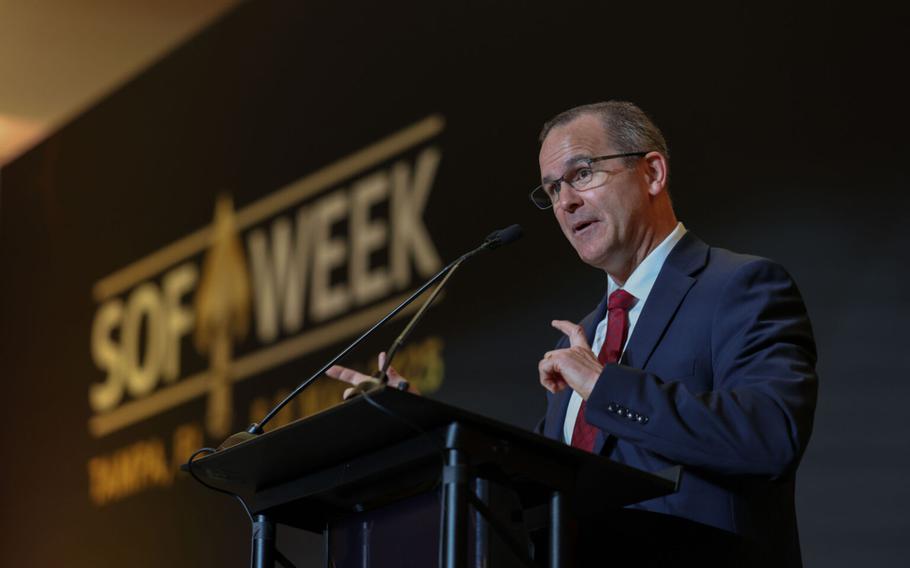
Members of the U.S. Army’s 10th Special Forces Group (Airborne) and NATO partner forces clear a trench at night during training at an undisclosed location in Poland on April 14, 2025. (Liseth Espinel Cuervo/U.S. Army)
The Pentagon is overhauling its special operations doctrine to sharpen key skills and align with the White House’s Indo-Pacific focus, a senior defense official said this week.
Colby Jenkins, the acting assistant secretary of defense for special operations and low-intensity conflict, outlined the changes Thursday in his keynote address at the Special Operations Forces Week convention in Tampa, Fla., according to a Defense Department statement the same day.
“This is our moment to forge the future of special operations,” said Jenkins, a former member of Army Special Forces. He added that it’s a future “where resilience, adaptability and speed win the day.”
The annual convention draws upward of 20,000 people, including influential defense officials and world leaders. Sponsored by U.S. Special Operations Command and the Global Special Operations Forces Foundation, it began in its current format in 2023.

Colby Jenkins, acting assistant secretary of defense for special operations and low-intensity conflict, addresses the audience during the Special Operations Forces Week convention in Tampa, Fla., on May 8, 2025. (Cutler Brice/U.S. Marine Corps)
Among the priorities Jenkins listed were a shift from stationary counterterrorism and crisis response formations toward more flexible teams able to operate by land, sea, air and in the cyber realm.
“The future of SOF is relentless, smaller teams, faster decisions, smarter systems (and) harder targets,” he said. “We cannot afford to simply maintain the old standards. We must sharpen them, modernize them and expand them without losing the warrior ethos that (defines) our special operations.”
The Pentagon also will focus on resilience, improving training and readiness, aligning development to priorities and strengthening the oversight of resources and accountability, Jenkins said.
During his speech, he vowed to harness artificial intelligence and invited the special operations community to contribute ideas regarding its future.
Defense Secretary Pete Hegseth, who was in attendance, also thanked the special operators for maintaining physical standards, noting that standards must be high throughout the armed services.
The comments came as the Pentagon conducts a global review of the military’s force posture, including special operations.
Lawmakers also must consider the role of special operators in such White House priorities as securing the southern border and fighting foreign drug cartels, the Congressional Research Service said in a March report.
The U.S. Special Operations Command, headquartered at MacDill Air Force Base, Fla., includes about 70,000 active duty, reserve and civilian personnel, the report said.